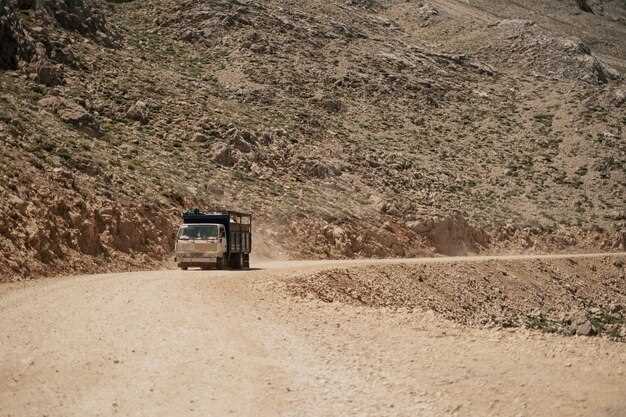
When it comes to racing on dirt and gravel tracks, understanding the unique characteristics of these surfaces is essential for achieving optimal performance. The varying levels of traction and surface composition can significantly impact how your vehicle behaves. Preparing for these types of tracks requires not only a solid setup but also an awareness of how your vehicle interacts with the terrain.
One of the first steps in your preparation is to focus on the vehicle setup. This involves adjusting the suspension, tire pressure, and alignment to better suit the loose and uneven surfaces of dirt and gravel. Each adjustment can alter how your car responds to acceleration, steering, and braking, making it crucial to test different configurations to find what works best for you.
Additionally, understanding the condition of the track is vital. Weather and maintenance can dramatically change the surface, requiring you to adapt your setup accordingly. By observing how the surface evolves during practice sessions, you’ll gain insights that can help you make real-time adjustments and improve your overall performance during the race.
Selecting the Right Tires for Rally Surfaces

Choosing the appropriate tires for rally surfaces is crucial for optimizing performance and ensuring safety during your races. The type of terrain, weather conditions, and specific rally setup all play significant roles in tire selection.
When racing on dirt and gravel, look for tires designed to offer maximum grip and stability. These tires typically feature deeper treads and larger void ratios to effectively channel loose surfaces and enhance traction. A common choice among rally drivers is a tire with a soft compound, which provides better contact with the ground and improves handling in varying conditions.
Consider the width of the tires as well. Wider tires can increase the contact patch, enhancing grip during cornering. However, they may also create more drag, affecting acceleration. Therefore, finding a balance between width and grip based on the specific rally setup is essential.
It is also important to take into account the weather conditions. In wet environments, tires with specific patterns that can effectively disperse water are necessary to prevent hydroplaning. In contrast, dry conditions may allow the use of more aggressive tread patterns for improved traction.
Lastly, ensure that your tire pressure is adjusted correctly according to the rally setup and the surfaces you will encounter. Lower pressures can improve grip on loose surfaces but may risk pinch flats or reduced stability on harder ground. Regularly monitoring tire wear and making adjustments based on track feedback will also enhance overall performance during the rally.
Adjusting Suspension Settings for Maximum Grip
To maximize grip on dirt and gravel tracks during rally events, adjusting your suspension setup is crucial. The right suspension settings will help you maintain traction, improve handling, and enhance overall performance. Here are key factors to consider:
- Shock Absorber Settings: Tune your shock absorbers to balance compression and rebound. A softer compression setting allows the wheels to stay in contact with uneven surfaces, while an appropriate rebound setting prevents the car from bouncing excessively.
- Spring Rates: Choose springs that are neither too stiff nor too soft. Stiffer springs may cause loss of traction on rough terrains, while overly soft springs can lead to bottoming out. Experiment with different rates to find the perfect balance.
- Ride Height: Adjust the ride height to lower the center of gravity without sacrificing ground clearance. This adjustment can enhance stability and cornering ability, giving you better control over your vehicle.
- Camber and Toe Angles: Set the camber angles slightly negative to improve cornering grip. Adjust the toe settings to ensure that wheels align correctly, reducing tire wear and enhancing handling response.
- Dampening Adjustments: Fine-tune the dampening settings to suit the track conditions. Softer settings enhance grip on loose surfaces, whereas stiffer settings are more suitable for packed gravel and dirt.
Testing different setups in practice sessions allows you to find the ideal suspension adjustments tailored to your driving style and the specific characteristics of the rally track. Remember to keep track of changes and their effects on performance to establish a reliable setup for future events.
Tuning Engine Performance for Off-Road Conditions

Achieving optimal engine performance for dirt and gravel tracks requires specific adjustments tailored to the unique challenges posed by off-road surfaces. One of the primary considerations is the setup of the engine to enhance torque delivery. Off-road terrains often demand more low-end torque for better traction and control when navigating steep inclines or loose gravel.
Adjusting the air-fuel mixture is essential for maximizing horsepower while maintaining engine efficiency. A richer mixture can help improve performance when tackling harsh surfaces, as it provides more fuel during demanding conditions. Additionally, incorporating a high-performance air filter can increase airflow, thus improving combustion efficiency in various environments.
Furthermore, tuning the engine’s timing can greatly affect throttle response and overall power. Retarding the ignition timing slightly can prevent knocking when driving on uneven terrain, ensuring that the vehicle runs smoothly. In contrast, advance timing can enhance performance on more forgiving surfaces, providing a balance as needed.
Considering the impact of gearing is also crucial when tuning for off-road conditions. Lower gear ratios can boost acceleration on loose surfaces, allowing for quicker starts and better maneuverability. It is advisable to analyze the vehicle’s setup to find the right balance between off-road capability and highway performance.
Lastly, regular maintenance is key. Clean and replace spark plugs and ensure that the fuel injectors are functioning correctly to prevent power loss and maintain engine responsiveness. By focusing on these factors, drivers can significantly enhance their vehicle’s performance tailored specifically to the demands of dirt and gravel tracks.











